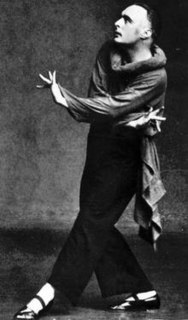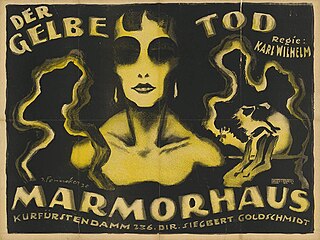
Paul Joseph Goebbels was a German Nazi politician and Reich Minister of Propaganda of Nazi Germany from 1933 to 1945. He was one of Adolf Hitler's closest and most devoted associates, and was known for his skills in public speaking and his deeply virulent antisemitism, which was evident in his publicly voiced views. He advocated progressively harsher discrimination, including the extermination of the Jews in the Holocaust.

The former Borgward car manufacturing company, based in Bremen, Germany, was founded by Carl F. W. Borgward (1890–1963). It produced cars of four brands, which were sold to a diversified international customer base: Borgward, Hansa, Goliath and Lloyd. Borgward's Isabella was one of the most popular German premium models in the 1950s, while Lloyd's Alexander / Lloyd 600 model offered affordable mobility to many working-class motorists. The group ceased operations in 1961, following controversial insolvency proceedings.

Johann Salomo Semler was a German church historian, biblical commentator, and critic of ecclesiastical documents and of the history of dogmas. Sometimes known as "the father of German rationalism".

Rudolf von Laban, also known as Rudolf Laban, was an Austro-Hungarian dance artist and theorist. He is considered as one of the pioneers of modern dance in Europe as the "Founding Father of the Expressionist Dance" in Germany. His work laid the foundations for Laban Movement Analysis, Labanotation, other more specific developments in dance notation and the evolution of many varieties of Laban movement analysis. He is considered to be one of the most important figures in the history of dance.

Horst Ludwig Georg Erich Wessel, commonly known as Horst Wessel, was a Berlin leader of the Nazi Party's stormtroopers, the Sturmabteilung (SA). After his murder in 1930, he was made into a martyr for the Nazi cause by Joseph Goebbels.
Ricardo Semler is the CEO and majority owner of Semco Partners, a Brazilian company best known for its radical form of industrial democracy and corporate re-engineering. Under his ownership, revenue has grown from 4 million US dollars in 1982 to 212 million US dollars in 2003 and his innovative business management policies have attracted widespread interest around the world. Time featured him among its Global 100 young leaders profile series published in 1994 while the World Economic Forum also nominated him. The Wall Street JournalAmerica Economia, The Wall Street Journal's Latin American magazine, named him Latin American businessman of the year in 1990 and he was named Brazilian businessman of the year in 1990 and 1992. Virando a Própria Mesa, his first book, became the best selling non-fiction book in the history of Brazil. He has since written two books in English on the transformation of Semco and workplace re-engineering: Maverick, an English version of "Turning Your Own Table" published in 1993 and an international bestseller, and The Seven-Day Weekend in 2003.

The Testament of Dr. Mabuse, also called The Last Will of Dr. Mabuse, is a 1933 German crime-thriller film directed by Fritz Lang. The movie is a sequel to Lang's silent film Dr. Mabuse the Gambler (1922) and features many cast and crew members from Lang's previous films. The film features Rudolf Klein-Rogge as Dr. Mabuse who is in an insane asylum where he is found frantically writing his crime plans. When Mabuse's criminal plans begin to be implemented, Inspector Lohmann tries to find the solution with clues from gangster Thomas Kent, the institutionalized Hofmeister and Professor Baum who becomes obsessed with Dr. Mabuse.
Arnold Roger Manvell was the first director of the British Film Academy, author of many books on films and film-making, and authored and co-authored many books on Nazi Germany, including biographies of Adolf Hitler, Rudolf Hess, Heinrich Himmler, Joseph Goebbels and Hermann Göring. During World War II he worked in the Ministry of Information, creating propaganda films for the British government. In his career, he also lectured in universities in as many as forty countries in three continents, and made a name as a broadcaster and screenwriter. He joined the Boston University faculty in 1975 teaching film history classes at the College of Communications. Manvell was named University Professor in 1982.

Das Reich was a weekly newspaper founded by Joseph Goebbels, the propaganda minister of Nazi Germany, in May 1940. It was published by Deutscher Verlag.
Borut Semler is a Slovenian footballer who plays for USV Hengsberg.
Dean Semler, A.C.S., A.S.C., is an Australian cinematographer and film director. Over his career, he has worked as a cinematographer, camera operator, director, second unit director, and assistant director. He is a three-time recipient of the AACTA Award for Best Cinematography and an Academy Award winner. He is a member of both the Australian Cinematographers Society (ACS) and the American Society of Cinematographers (ASC).

The Great King is a 1942 German drama film directed by Veit Harlan and starring Otto Gebühr. It depicts the life of Frederick the Great, who ruled Prussia from 1740 to 1786. It received the rare "Film of the Nation" distinction. It was part of a popular cycle of "Prussian films".

The Eleven Schill Officers is a 1926 German silent historical film directed by Rudolf Meinert and starring Meinert, Gustav Adolf Semler, Grete Reinwald, and Leopold von Ledebur. The film depicts the failed 1809 uprising of Prussian soldiers led by Ferdinand von Schill against the occupying French during the Napoleonic War. The film received poor reviews from critics, but earned enough at the box office to offset its production costs.

Inside the Third Reich is a 1982 television film based on the book Inside the Third Reich by Albert Speer. It was originally broadcast on network television by the American Broadcasting Company (ABC).
John D. 'Jack' Semler is an American ice hockey coach and former player who was the first head coach for Maine.

Eva and the Grasshopper is a 1927 German silent film directed by Georg Asagaroff and Wladyslaw Starewicz and starring Camilla Horn, Gustav Fröhlich and Warwick Ward.
The Good Reputation is a 1926 French-German silent drama film directed by Pierre Marodon and starring Lotte Neumann, Hans Mierendorff and Germaine Rouer.
Der Mann aus Stahl is a 1922 German silent drama film directed by Joseph Delmont and starring Luciano Albertini, Wilhelm Diegelmann and Carola Toelle.
The Black Count is a 1920 German silent film directed by Otz Tollen and starring Olga Engl, Alfred Abel, and Rudolf Klein-Rogge.

The Yellow Death is a 1920 German silent thriller film directed by Carl Wilhelm and starring Eduard von Winterstein, Guido Herzfeld and Frida Richard. It was released in two parts, premiering at the Marmorhaus in Berlin.











